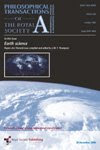What I did not mention in Parts I,II or III was that,
I ran down Prof. Lasher-Trapp’s reference list from her paper in The Oxford Round Table ORT event and dug up another nugget for readers. This time it’s offered to read freely online by the National Academy of Science (NAS-USA) National Academies Press (NAP) cf NAP-widget in the RH Side bar.
This completes, at least for the time being, of my ORT reviews and sends the reader off at a tangent to the associated NAP book "EVALUATION OF THE NATIONAL AEROSPACE INITIATIVE" on my blog "This-Above-All" obviously...
EVALUATION OF THE NATIONAL AEROSPACE INITIATIVE
Committee on the National Aerospace Initiative
Air Force Science and Technology Board
Division on Engineering and Physical Sciences
NATIONAL RESEARCH COUNCIL OF THE NATIONAL ACADEMIES
Finally to the summit of one Science Educational Tree to the important catalogue of freely available online ebooks:
THE NATIONAL ACADEMIES PRESS, Washington, D.C
This-Above-All & more specifically to "This-Above-All_Books_Journals_Tools"
All may pages
CSE - Customised Search Engine - Conversations on Innovations

Where my visitors live
InnoCentive: Challenges-All Categories
IdeaConnection :: Idea Contests
EUROPA - Research and Innovation - What's New
EUROPA - Research and Innovation: What's New in Innovation
Friday, October 17, 2008
Sustainability_ The Ultimate Quest-Part IV_ Serendipity_From the Highly Specialised to the Full Catalogue of NAP eBooks
Publié par Unknown à 11:36 pm 0 commentaires
Libellés : Environment-Sustainable Development, Foresight, Free Science eBooksn National Academies Press, Sustainability-Science
Sustainability_ The Ultimate Quest-Part III_Indictment _ORT Forum on public policy
Professor Ivor van Heerden, Associate Professor, Civil and Environmental Engineering, and Deputy Director, LSU's Hurricane Center, presented a provocative analysis of Hurricane Katrina's devastation of New Orleans, at the August 12, to 17, 2007, Oxford Round Table (ORT) held at St. Anne's College in the University of Oxford. The title of his paper was"Global Warming and Sustainable Development: Governing a Crisis.
Professor van Heerden's insights regarding failure of the levees in New Orleans have also been aired lately on NOVA, PBS. Professor van Heerden's paper, The Failure Of The New Orleans Levee System During Hurricane Katrina And Public Policy Needs For The Future was published in the Oxford Round Table Forum on Public Policy, Volume 3, Number 4, 2007, a publication of the Oxford Round Table. Professor van Heerden's new book The Storm has been cited as "gripping" and "compelling" by Publishers Weekly and CNN's Anderson Cooper.
ABSTRACT-excerpt: "
Oxford Round TableHurricane Katrina made landfall in Louisiana as a moderately fast-moving Category 3 storm. Thereafter 85 percent of Greater New Orleans was flooded, 1600 lives were lost and approximately 500,000 homeless. The hurricane protection system failed catastrophically with over half the levee system damaged or breached reflecting that the best science was not utilized in surge elevation determinations; a major misinterpretation as relates to the usage of surveyors datum's; levee designs did not account for poor soil foundations and/or underseepage; and, miles of levees lacked armoring to protect from waves. Surge elevations were exacerbated by the loss of coastal wetlands which since 1930 exceeds 500,000 ha.
As global warming accelerates, 'smart' planning is needed for many major ports and other coastal communities. Tropical cyclone surge management making full use of natural as well as man-made components needs to be augmented with sustainable development and some retreat from low-lying coastal regions. Retreat from the Louisiana coastal zone is a reality but coastal restoration in the key to the future habitation thereof, along with sustainable surge protection systems. This latter system must be complimented and protected by aggressive coastal wetland and barrier island restoration."
Professor van Heerden provided strong back-up to support his case:
Reviews and summary of The Storm
PBS article about hurricane Katrina and ivh about January 2005
Sciencenow Video
Segment of video from NOVA
Sciencenow/3214/06
Youtube video about hurricane Katrina and Ivor
Publié par Unknown à 8:14 pm 0 commentaires
Libellés : Academic Think Tanks., Case Study, Environment-Sustainable Development, Hurricanes, Oxford Round Table, Sustainability-Science
Wednesday, August 20, 2008
Coal Burning_Past Records from Arctic Archive_"Coal burning leaves toxic heavy metal legacy in the Arctic"More evidence militates for Zero Emissions
The authors Abstract is given below:
Toxic heavy metals emitted by industrial activities in the mid-latitudes are transported through the atmosphere and deposited in the polar regions; bio-concentration and bio-magnification in the food chain mean that even low levels of atmospheric deposition may threaten human health and Arctic ecosystems. Little is known about sources and long-term trends of most heavy metals before ≈1980, when modern measurements began, although heavy-metal pollution in the Arctic was widespread during recent decades. Lacking detailed, long-term measurements until now, ecologists, health researchers, and policy makers generally have assumed that contamination was highest during the 1960s and 1970s peak of industrial activity in North America and Europe. We present continuous 1772–2003 monthly and annually averaged deposition records for highly toxic thallium, cadmium, and lead from a Greenland ice core showing that atmospheric deposition was much higher than expected in the early 20th century, with tenfold increases from pre-industrial levels by the early 1900s that were two to five times higher than during recent decades. Tracer measurements indicate that coal burning in North America and Europe was the likely source of these metals in the Arctic after 1860. Although these results show that heavy-metal pollution in the North Atlantic sector of the Arctic is substantially lower today than a century ago, contamination of other sectors may be increasing because of the rapid coal-driven growth of Asian economies.
Publié par Unknown à 12:36 pm 0 commentaires
Libellés : Coal-Mining-Burning, PNAS, Sustainability-Science






